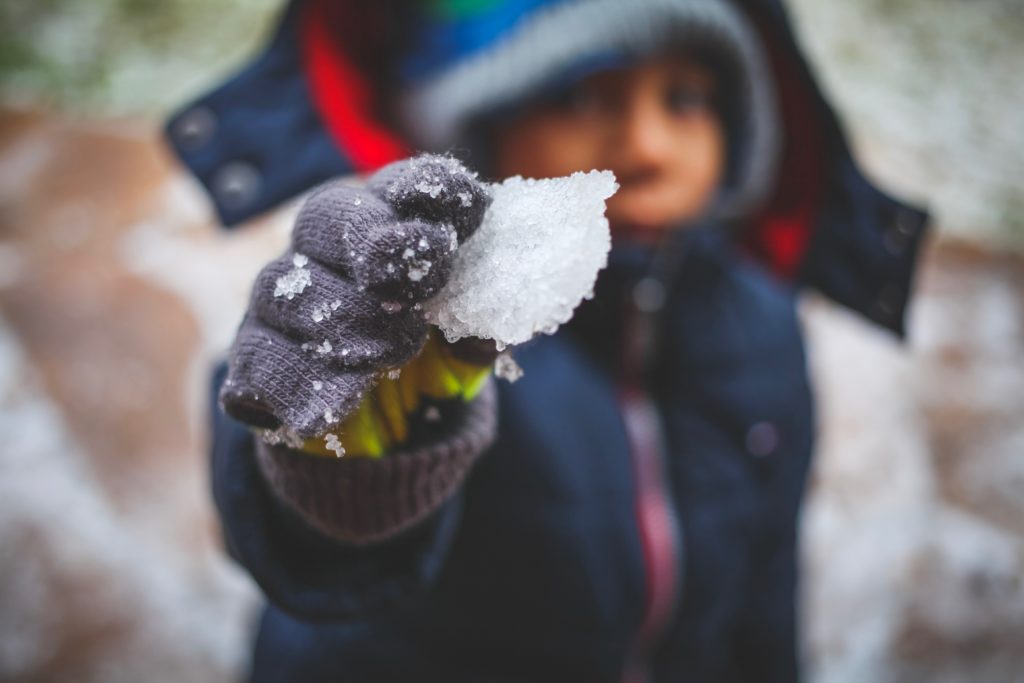Power outages can turn life upside down for families, especially with kids and parents all at home. During severe weather, power outages can go from an inconvenience to dangerous and families are particularly at risk. To help Cleo Members before and during power outages, our Cleo Guides pulled together their best advice for how to manage. See below for a selection of content from the Cleo app.
How to prepare for—and live through—a power outage
When your power goes out, regular life gets disrupted. Without the internet, it’s hard to communicate, let alone work. Your food will go bad, and it’s tough to keep children and loved ones safe. While a power outage can happen unexpectedly, you can prepare. Here are some resources to help:
During a power outage, you want to make sure you:
- Monitor local alerts, by phone, TV, or radio.
- Conserve your phone battery and recharge when you get a chance. A battery-powered charger is a helpful thing to have on hand if you’re preparing a kit ahead of time.
- Eat perishable food and keep your freezer and refrigerators closed as much as possible. Food in a refrigerator can last up to 4 hours with the door closed, and a full freezer can last up to 48 hours.
- Unplug appliances to prevent power surges.
- Use flashlights instead of candles.
- Consider going to a friend’s house or somewhere else with power if possible.
What you need to know about food safety during power outages
It’s crucial to practice food safety during power outages. Food poisoning can cause cramps, diarrhea, fever, and nausea, and make an already difficult situation even worse. Here are some ways to prepare for and manage food safety during power outages.
Items to gather ahead of power outages:
- Extra thermometers for your freezer, refrigerator, and coolers you may use
- Extra ice, coolers, and frozen gel packs
- Bottled water
- Manual can opener
Practice food safety during a power outage:
- Keep the door to your freezer and refrigerator closed. Your refrigerator will keep food safe for 4 hours and a full freezer will keep food safe for about 48 hours, or 24 hours if it is half full.
- When in doubt, throw it out. The United States Department of Agriculture (USDA) recommends never tasting food to determine its safety.
You can find a full list of perishable foods on the USDA website. Always check for food labels that indicate products must be refrigerated after opening. If your power has still not returned after 4 hours, it’s time to eat or throw out some of your perishable foods including:
- Meat products, including raw or cooked meat, poultry, and seafood, luncheon meats, and leftovers containing meat products
- Milk products, including milk, cream, yogurt, sour cream, and soft cheeses, and any leftovers containing dairy products, like doughs, creamy salad dressings, or custards. Shelf-stable and unopened milk products are OK.
- Foods with unusual odors, molds, colors, or textures
Keep your food cold:
If your refrigerator has been without power for 4 hours, you can transfer unspoiled foods to a cooler that is filled with ice or frozen gel packs. Use a thermometer to keep the temperature in the cooler at 40°F/4.44°C.During a snowstorm, do not place perishable foods outside or buried in the snow, where they can be exposed to germs and hungry animals. Instead, make ice by filling buckets or cans with water and leaving it outside to freeze and use in your refrigerator, freezer, or coolers. Remember to leave space in your container for the ice to expand as it freezes.
Additional Resources
- US Food & Drug Administration: How to protect food and water during storms
- USDA: How to keep food safe during a power outage
How to handle pumping and milk freezer storage without electricity
For breastfeeding or chestfeeding parents who pump and store milk, electricity is crucial. If you find yourself without power, here are some things you can do:
- Use a manual hand pump instead of your electrical pump. (If you’re planning in advance, now may be a good time to buy one as a backup.)
- Use your car adapter or battery pack for your electric pump.
- Try hand expression.
If you have a stash of frozen milk in your freezer and don’t have power, here are some things you can do:
- Keep it in your freezer and do not open the freezer. The USDA advises that a full freezer can hold temperature for 48 hours, while a half-full freezer can maintain it for 24 hours. If you know your power may be going out, pack your freezer as much as possible.
- Move the milk to the back or center of the freezer where items defrost more slowly.
- If it’s approaching 48 hours, move your milk to a location with power, like a friend’s house.
Additional resources:
Keeping children safe and entertained during a power outage

No power means no screens, so parents have to get creative about how they entertain their little ones. While it’s light out, take the chance to get active, either inside or outside. Other power-free activities include: telling stories, building forts, “camping” in the living room, going on a bear hunt, playing cards, playing charades, doing a puzzle, or trying some yoga.
Use flashlights instead of candles to prevent any fire hazard. If you have enough, designate a flashlight for each member of the family and play a game of flashlight tag. If you have battery-powered fairy lights, they can be a fun way to create light for nighttime reading. If your heat is impacted and you’re worried your child may be cold, dress them in layers before bed. For infants, it’s still important to keep their beds free of blankets. But a thicker sleep sack will help keep them warm.
Additional resources:
Staying in communication when your power is out
When your power is out, your cell phone is often the only thing keeping you connected to the outside world. Here are some tips for making the most of it.
- While you have access to your phone, write down crucial phone numbers that you might not know by heart.
- Text instead of call to conserve battery.
- If your cell carrier is having service issues, check if a neighbor is on a different carrier and ask to borrow their phone to make important phone calls.
- Use a battery-powered radio to get the news, vs. searching the internet on your phone.
- Charge your phone whenever you have a chance and keep it in low-battery mode. Ideally, you also have access to a portable battery-powered charging pack.
- Use a car-charger to charge your phone if needed.
- And of course, it’s always a good idea to create an emergency communication plan.
